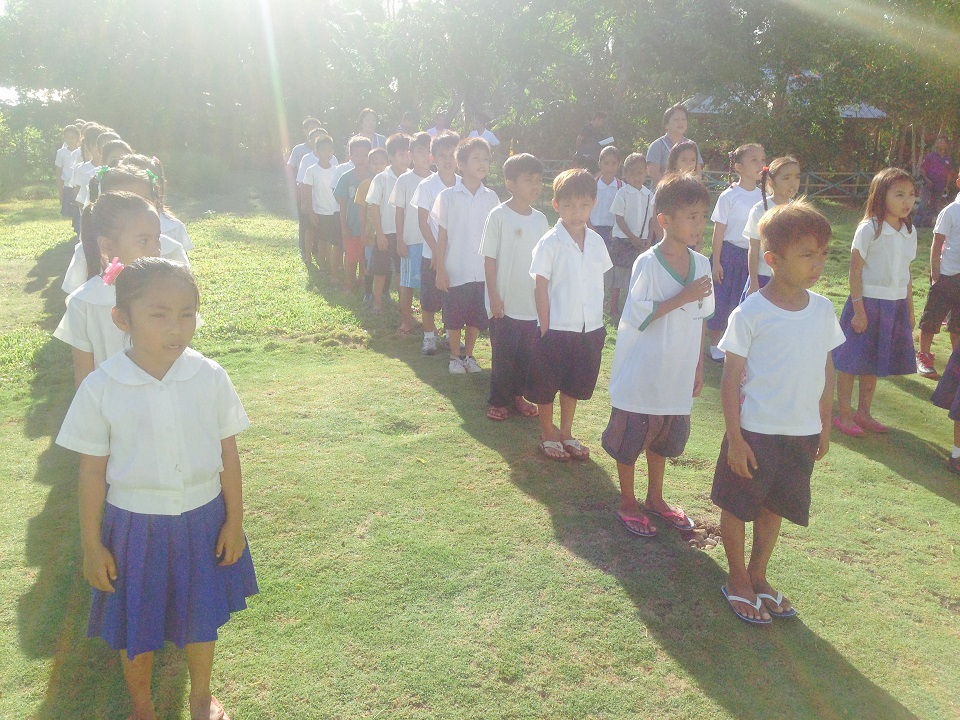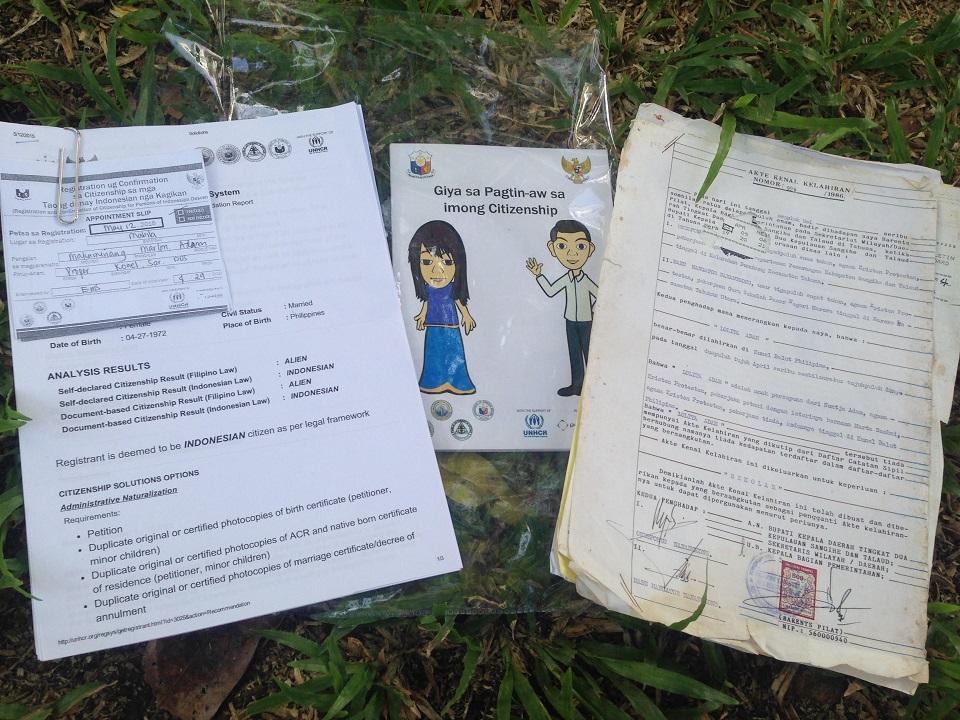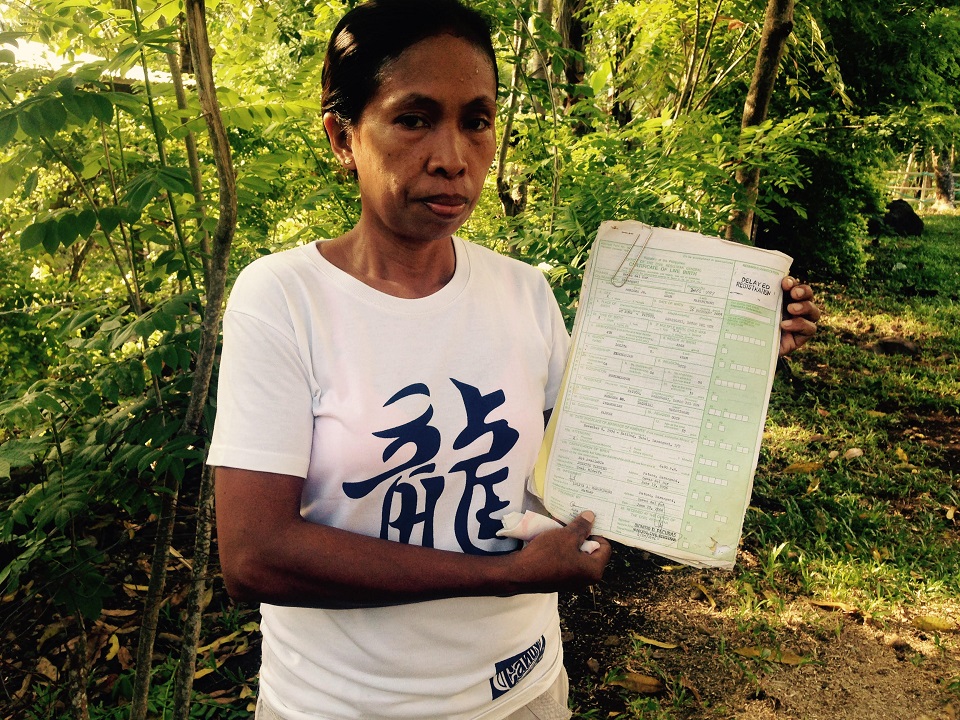Filtered By: Lifestyle
Lifestyle
Of courage and fervor: Honoring our nation, respecting its symbols
Text and photos by CESAR APOLINARIO, GMA News
SARANGANI, Davao Occidental - Lolita Adam Makaminang, 34, stood still under an acacia tree inside the compound of Konel Elementary School in Balut Island. Positioned a few steps away from the flagpole, she joined school children in singing the Philippine national anthem.
Ang kislap ng watawat mo'y tagumpay na nagniningning
Ang bituin at araw niya'y kailanpama'y di magdidilim

Pupils at the Konel Elementary School on Balut Island, Sarangani during the flag ceremony. Lolita Makaminang and I were situated behind them, under an acacia tree.

The ceremony was also attended by Education Secretary Armin Luistro. It was the first time a DepEd official from Manila ever visited schools in Balut
Buhay ay langit sa piling mo
Lolita's rendition of "Lupang Hinirang" left me breathless because she sang it with such fervor. She showed so much respect for the Philippine flag, something that seems to be increasingly taken for granted by many Filipinos.
In an interview later, I was surprised to learn she was not even a Filipino.

Lolita Makaminang holds documents proving that she is an Indonesian. She said she owes the Filipino people a lot for embracing her and her four children, who were allowed to attend school despite lacking necessary documents.
When asked what she knew about the song she just sang, Lolita responded quickly in straight Filipino: "Ang gumawa ng pambansang awit ng Pilipinas ay si Julian Felipe. Ang titulo nito ay 'Lupang Hinirang' at hindi 'Bayang Magiliw'. Sinasabi ko nga sa dalawang anak kong lalaki na huwag magkakamali na sabihing 'Bayang Magiliw' dahil magagalit si Teacher.”
Aside from knowing the Philippine anthem by heart, Lolita can also speak the Visayan dialect mostly spoken by the people of Sarangani. A resident of this town for almost two decades, she has imbibed her neighbors' ways, including memorizing the Philippine national anthem, having attended and witnessed countless flag-raising ceremonies.
She said she will never get tired of singing the national anthem because she loves its lyrics. Speaking in the Visayan dialect, she said that although she is an Indonesian, she nevertheless feels that Filipino blood runs in her veins, and that is why singing the national anthem makes her feel patriotic in a land she is beginning to call her home.
That perhaps sums up the intent of Republic Act No. 8491 ("The Flag and Heraldic Code of the Philippines"), which states that “reverence and respect shall at all times be accorded the flag, the anthem, and other national symbols…The heraldic items and devices shall seek to manifest the national virtues and to inculcate in the minds and hearts of our people a just pride in their native land, fitting respect and affection for the national flag and anthem, and the proper use of the national motto, coat-of-arms and other heraldic items and devices.”
The law also stipulates that the national anthem "shall always be sung in the national language" regardless if performed inside or outside the Philippines, and specifies that the singing must be done "with fervor"—something Lolita was already doing without knowledge of this portion of the law.
The accidental heroine
Lolita's singing of the national anthem reminded me of an incident in July 2011, when a 12-year-old girl from Malinao, Albay braved raging floods caused by Typhoon Juaning to save the Philippine flag.
It is one vivid image that always pops into my mind whenever I hear inspiring stories of heroism, especially on Independence Day: 6th grader Janela Lelis unknowingly risking life and limb to save the flag from the flood.

Sixth grader Janela Lelis saving the Philippine flag during the onslaught of Typhoon Juaning in Albay. The photo was taken at the height of the floods in Malinao. Photo courtesy of Frank Peña Lorzano

Janela received a commendation from the NHCP. Education Secretary Luistro was also present at the ceremony. Photo courtesy of Jesus Matubis
She also received a full scholarship for her secondary and college education from some private individuals.
Getting it wrong
Millions of people worldwide have seen our flag and heard our national anthem, thanks to our boxing champion Manny Pacquiao, who in his many international fights has brought honor to this country and made possible the rendition of our national anthem.
Many popular artists get it wrong in singing "Lupang Hinirang." Their arrangers modify the tone, tempo and even put second voices to it, pacing it differently than what the law requires.
However, there are those who have sung the anthem a capella during Pacquiao’s fights in accordance with what the law demands—that “the rendition of the National Anthem, whether played or sung, shall be in accordance with the musical arrangement and composition of Julian Felipe.” These performers include Lea Salonga, Kyla, Ciara Sotto, Charice, Karylle, and Aicelle Santos, Jonnalyn Viray and Maricris Garcia of the now defunct La Diva.

Cesar Apolinario meets Janela Lelis
Many Filipinos seem to take for granted the value of these symbolic items. They do not know how to sing the national anthem properly, much less to know its correct lyrics and title.
Perhaps, our country needs more Lolitas who, despite her foreign identity, has appreciated and valued what our country has offered her and her children.
Lolita's two sons and two daughters all go to school, an opportunity her children may not be able to pursue in Indonesia. And she is grateful that she is still living here in Balut.
I asked her if she has plans to leave Balut Island for good and her reply made me excited.
"Gusto ko na rito sa Pilipinas. Ako ay Filipino na marunong mag-Tagalog at mag-Bisaya, pareho ng Pambansang Kamao na idolo ng dalawang anak kong lalaki,” she said.
Lolita wants to be called a Filipina and not an Indonesian.
Her daughter Angelika feels the same way, saying she was ready to renounce her Indonesian citizenship and turn Filipino.
"Ang mga kaibigan ko ay Pinoy. May manliligaw akong Pinoy. Gusto ko ang ugali ng mga Pinoy. Hindi nagkakanya-kanya kundi nagbabayanihan sa oras ng problema," she said.

Some of Lolita's documents. She says the Indonesian government stricly implements a "no documents, no enrollment" policy, so she chose to stay here for her kids' education.
Luistro, who was very eager to answer my questions, said that he advocates it.
This answer did not surprise me, since Luistro is a former president of De La Salle University and is a member of the Fratres Scholarium Christianorum (Brothers of Christian Schools), whose mandate is to promote education.
Passionate about kids’ welfare and their education, Brother Luistro said that we cannot deprive a child, no matter his nationality, the education he desires. It is a right, never a privilege.
For the past three or four decades, the Philippine government has accepted children from other countries to study here. In fact, the number of Indonesian kids enrolled in schools in both Islands in Sarangani has doubled over the years.
As of now, of the 5,100 students enrolled here in both islands, 20 percent are Indonesians and Filipino-Indonesians.
Even without the relevant documents, foreign children such as the Indonesians have been allowed to enrol in schools in this far-flung town.
It is one reason why Lolita is more than ready to become a Filipino citizen. To prove it, she handed over to me some documents seeking Filipino citizenship.
I asked her what she learned about Filipinos.
Her answer left me in awe: she heartily sang the last phrase of the hymn that symbolizes my being Filipino.
Lupa ng araw, ng luwalhati't pagsinta,
Buhay ay langit sa piling mo;
Aming ligaya, na pag ma'y mang-aapi,
Ang mamatay ng dahil sa iyo!
As I considered the lyrics of our national anthem, I felt relieved and humbled at the same time.
I began to feel more confident about embracing my culture, my roots and my being a Filipino in mind, in deed and in words.
I realized that the song that symbolizes me as a Filipino is worth rendering anywhere I go, and seeing our national colors waving never fails to bring pride and honor to me as a Filipino.
"Pinoy ako!" and I'm truly proud to be one.

Lolita Makaminang holds up her application for Filipino citizenship.
More Videos
Most Popular




